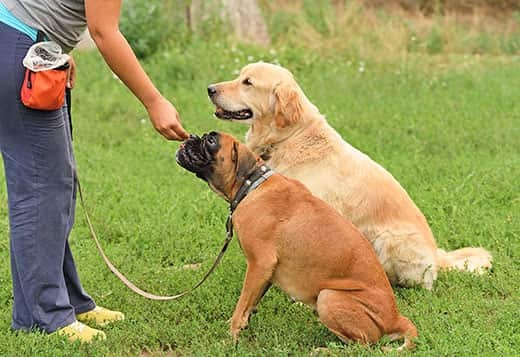
-
Find the right food for your petTake this quiz to see which food may be the best for your furry friend.Find the right food for your petTake this quiz to see which food may be the best for your furry friend.Health CategoryFeatured products
 Adult 7+ Healthy Cuisine Roasted Chicken, Carrots & Spinach Stew Dog Food
Adult 7+ Healthy Cuisine Roasted Chicken, Carrots & Spinach Stew Dog FoodDelicious roasted chicken paired with tender vegetables in a succulent stew
Shop Now Perfect Weight & Joint Support Large Breed Chicken & Brown Rice Recipe Dog Food
Perfect Weight & Joint Support Large Breed Chicken & Brown Rice Recipe Dog FoodThis weight management and mobility support dog food was created with Hill’s unique understanding of the biology of overweight dogs
Shop Now Adult Salmon & Brown Rice Recipe Dog Food
Adult Salmon & Brown Rice Recipe Dog FoodSupports lean muscle and beautiful coat for adult dogs
Shop NowFeatured products Adult Perfect Weight with Chicken Cat Food
Adult Perfect Weight with Chicken Cat FoodBreakthrough nutrition for your cat’s healthy weight maintenance and long-lasting weight support
Shop Now Adult Urinary Hairball Control Tender Chicken Dinner Cat Food
Adult Urinary Hairball Control Tender Chicken Dinner Cat FoodPrecisely balanced nutrition to support urinary health from kidney to bladder. With natural fibre technology to help reduce hairballs.
Shop Now Adult Salmon & Brown Rice Recipe Cat Food
Adult Salmon & Brown Rice Recipe Cat FoodSupports lean muscle and beautiful fur for adult cats
Shop Now -
DogCat
- Cat Tips & Articles
-
Health Category
- Weight
- Skin & Food Sensitivities
- Urinary
- Digestive
- Kidney
- Dental
- Serious Illness
-
Life Stage
- Kitten Nutrition
- Adult Nutrition
Featured articles Pet Food Storage Tips
Pet Food Storage TipsWhere you store your cat and dog food can make a big difference in the quality and freshness once it is opened. Here are some common questions and recommendations for optimal storage for all of Hill’s dry and canned cat and dog food.
Read More Water
WaterWater is the most important nutrient of all and essential for life. Animals can lose almost all their fat and half their protein and still survive, but if they lose 15% of their water, it will mean death.
Read More The Right Diet For Your Pet
The Right Diet For Your PetLearn what to look for in healthy pet food & nutrition, including ingredients, quality of the manufacturer, your pet's age, and any special needs they have.
Read More -


You've always wanted a pet, and as you're getting your home ready to welcome one into your life, you can't decide if you should adopt one or two dogs. Having two dogs is a big responsibility, but it's also a wonderful opportunity. Consider your current lifestyle, breed choice and long-term goals first. You want to make sure that the dog — or dogs — you bring home are the right fit in terms of energy, size and needs.
Canine Companionship
There are going to be times when you can't be at home with your dog. One benefit of having two is that they'll keep each other company. If the dogs get along well, the companionship will prevent boredom. They'll be occupied, which means the dogs will have less time for bad behaviors, such as chewing things they aren't supposed to.
They will play together, burn energy and be less dependent on you for exercise and "fun" time. Both dogs will be better socialized with other dogs, so if you have friends with pets, make sure to invite them all over for your next cookout.
However, just because you're ready to grow your family with more than one dog, it doesn't mean both dogs are looking for a partner in crime. For dogs that aren't keen on the idea of sharing their house with another pup, bad behaviors may occur. Look for signs of jealousy or defiance. If the dogs show any sign of aggression, you'll have to make a big decision. First, separate the dogs immediately. Next, either enlist the help of a professional dog trainer or consider separating the dogs forever.
If you already have one dog in your home, make sure to bring him to the shelter to meet his possible new companion. Most shelters are fine with this, and in fact recommend it. It will help you get a better sense of whether or not the two dogs will get along well, helping make your decision a little easier. Dogs at the shelter that are a little timid toward you or other dogs are not necessarily a bad second companion; they may have just had bad experiences in their life before they came to the shelter. Sometimes a little bit of love is all it takes to get a shy pup to come out of his shell and become another beloved member of the family.


Tasty Tips
Consider the Costs
Dogs can be expensive. When you're deciding on how many to adopt, think about long-term and short-term costs. The basics you'll need to get before bringing them home include dog food, collars and leashes. All of which are relatively inexpensive, though two dogs do consume more food than one! You may want to invest in other items, such as toys (to save money, they can share) and dog beds. Just be considerate of their feelings. If one of the dogs gets protective over a certain toy, it might be best to get a second one for the other one so they do not have to fight over it.
However, long-term you may be spending more money. Consider annual and unexpected veterinarian visits. There are routine office costs and vaccinations needed for both dogs. But dog-related costs aren't the only financial costs to consider. Have you started planning a Caribbean vacation? It may be tough to find someone willing to dog-sit both of them at the same time. If you can't find a sitter, you'll have to board your pups, and the price tag may be prohibitive.
 Adopting Both Dogs at the Same Time
Adopting Both Dogs at the Same Time
Any major transition can stress out dogs, but adopting two pets from the same litter may make them feel less worried with the change of environment. When you bring home two puppies, expect more work up front. Right from the get-go, it's important that your dogs are potty trained and any negative behaviors are addressed. By putting in the time immediately with training, your dogs will be at the same level. Both dogs learn together. Any redirection one dog receives, the other will witness and learn from the behavior modification.
You may find at some shelters that some dogs can only be adopted as a pair. This is typical of dogs that were brought to the shelter as a pair. To help them avoid separation anxiety and other issues, shelters often ask that both of these dogs be adopted together. This can sometimes be a great option for new dog parents as they are getting two dogs that are already socialized with one another, and shouldn't have as many associated behavioral or territorial issues.
Staggering Adult Dog Adoptions
Adopting dogs at different times may be slightly easier on a new pet parent than managing two different personalities and behaviors without any experience. Start training immediately with your first dog, and when you feel he has mastered the skills, then bring the second dog into your home. While all situations are different, the second dog may follow the lead of the first dog, making training easier on you and quicker for him. Vetstreet recommends pairing dogs without too huge of an age gap and with a slight difference in height and size for less chance of competition. For example, if you have a 6-year-old golden retriever, a 4-year-old house-trained bulldog may be a good companion.
Only you will be able to tell whether you're ready to open your home and your heart to one or two dogs. Your lifestyle is unique, and your pup parenting will be too.
Related products

This weight management and mobility support dog food was created with Hill’s unique understanding of the biology of overweight dogs

Gentle on stomachs while nourishing skin & supporting development in growing puppies

Delicious roasted chicken paired with tender vegetables in a succulent stew

Supports lean muscle and beautiful coat for adult dogs
Related articles

A dog with a sensitive stomach has special needs. Learn more about sensitive stomach symptoms in your dog, what you can do to help sooth your pet’s insides and get recommendations on sensitive stomach dog food.

Though it may seem like your four-legged friend loves nothing more than to nap on the couch, dogs need regular exercise to stay healthy just like people do.

Selecting the right food for your puppy is a key to quality nutrition and a long, healthy life., Learn more about how to select the right puppy food.

Learn what you can feed your pregnant or nursing dog to keep her and her new pups healthy.

Put your dog on a diet without them knowing
Our low calorie formula helps you control your dog's weight. It's packed with high-quality protein for building lean muscles, and made with purposeful ingredients for a flavorful, nutritious meal. Clinically proven antioxidants, Vitamin C+E, help promote a healthy immune system.
Put your dog on a diet without them knowing
Our low calorie formula helps you control your dog's weight. It's packed with high-quality protein for building lean muscles, and made with purposeful ingredients for a flavorful, nutritious meal. Clinically proven antioxidants, Vitamin C+E, help promote a healthy immune system.


